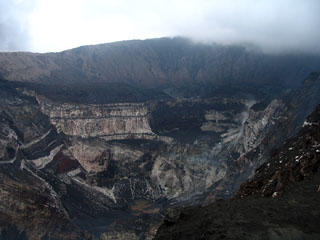Report on Ambrym (Vanuatu) — 10 January-16 January 2024
Smithsonian Institution / US Geological Survey
Weekly Volcanic Activity Report, 10 January-16 January 2024
Managing Editor: Sally Sennert.
Please cite this report as:
Global Volcanism Program, 2024. Report on Ambrym (Vanuatu) (Sennert, S, ed.). Weekly Volcanic Activity Report, 10 January-16 January 2024. Smithsonian Institution and US Geological Survey.
Ambrym
Vanuatu
16.25°S, 168.12°E; summit elev. 1334 m
All times are local (unless otherwise noted)
The Vanuatu Meteorology and Geo-Hazards Department (VMGD) reported that at 2217 on 13 January an eruption began at Ambrym’s Benbow Crater based on webcam and seismic data. The eruption was characterized by a loud explosion, intense incandescence at the crater, and gas-and-steam emissions. The Alert Level was raised from 1 to 3 (on a scale of 0-5) and the public to stay 2 km away from Benbow Crater and 4 km away from Marum Crater, and additionally to stay 500 m away from the ground cracks created by the December 2018 eruption. Sulfur dioxide emissions measured using satellite data were 1,116 tons per day on 14 January. Activity decreased during 15-17 January based on webcam images, seismic data, and field observations. Gas, steam, and ash emissions had decreased, and crater incandescence was dim or not visible at all. The Alert Level was lowered to 2 on 17 January.
Geological Summary. Ambrym is a large basaltic volcano with a 12-km-wide caldera formed during a major Plinian eruption with dacitic pyroclastic flows about 1,900 years ago. A thick, almost exclusively pyroclastic sequence, initially dacitic then basaltic, overlies lava flows of a pre-caldera shield volcano. Post-caldera eruptions, primarily from Marum and Benbow cones, have partially filled the caldera floor and produced lava flows that ponded on the floor or overflowed through gaps in the caldera rim. Post-caldera eruptions have also formed a series of scoria cones and maars along a fissure system oriented ENE-WSW. Eruptions have been frequently reported since 1774, though mostly limited to extra-caldera eruptions that would have affected local populations. Since 1950 observations of eruptive activity from cones within the caldera or from flank vents have occurred almost yearly.
Source: Vanuatu Meteorology and Geohazards Department (VMGD)

